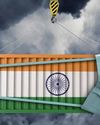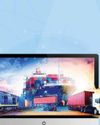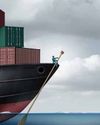Appropriate policy framework and favourable regulations form the corner stone for the growth of any sector and logistics is no different. At the CEO Conclave, Ravinder Goyal, IRTS, Adviser (Infrastructure Connectivity), NITI Aayog, in conversation with Anil Devli, CEO, INSA, deciphers the role of Niti Aayog - a think tank driving policy formulation in India, in promoting multimodal logistics.

Anil Devli: What is your role as Advisor, Infrastructure Connectivity at NITI Aayog and what is the vision of Niti Aayog as far as maritime sector is concerned?
Ravinder Goyal: There are a lot of misconceptions about the role of Niti Aayog in the transport sector. Niti Aayog has evolved from the earlier role of planning commission which was basically appraising the state’s plans and the ministries plans and regulating the funding also. Subsequently when Niti Aayog was transformed into an organisation, the role given to Niti Aayog is that of a think tank and an action tank. The whole idea is that it should be able to drive the policy of India. To this end Niti Aayog for the past three years organises workshops,writes policy papers, consults various stakeholders across industries.
Focusing particularly on multimodal transport, the mandate for Niti Aayog is:
1. As there are sectorial imbalances and modal imbalances in the transport sector, the freight has shifted from rail to road. Earlier the road share used to be much less than 14-15 per cent at the time of independence, now the road’s share is almost 67-68 per cent. this has its own drawbacks in the sense railways despite being the economical mode of transport is carrying much less freight than what it should be carrying. The result is congestion on roads, average speed has decreased and cost of logistics has gone up. One mandate for Niti Aayog is to correct the imbalances in the modal mix. For instance, coastal shipping is currently playing a very minor role in logistics. The capacity at the ports is growing at the rate of 16 per cent annually, whereas the cargo is only growing at 5 per cent. The port capacity is still underutilised, so there is lot of scope for coastal shipping which can correct these modal imbalances and ultimately cut down the logistics cost.
Esta historia es de la edición February 2018 de Maritime Gateway.
Comience su prueba gratuita de Magzter GOLD de 7 días para acceder a miles de historias premium seleccionadas y a más de 9,000 revistas y periódicos.
Ya eres suscriptor ? Conectar
Esta historia es de la edición February 2018 de Maritime Gateway.
Comience su prueba gratuita de Magzter GOLD de 7 días para acceder a miles de historias premium seleccionadas y a más de 9,000 revistas y periódicos.
Ya eres suscriptor? Conectar

Impact Of Covid-19 On Shipping And Logistics
Industry stalwarts discuss threadbare the prevailing logistics and supply chain scenario and issues in clearing cargo during the COVID-19 lockdown

Digital Platforms Defy Lockdown
Digital trading modules such as eNAM are enabling farmers to move their produce from farm to market even during the lockdown

GARMENT TRADE TRAMPLED
As retailers face a shutdown in US and Europe, the cascading affect has caused mass cancellation of orders in Bangladesh

TRADE RESUMES WITH CHINA
While India has allowed uninterrupted movement of imports into Nepal even during lockdown, China is reopening its borders as it emerges from the pandemic
LESS HUMAN INTENSIVE, MORE DATA DRIVEN
AI provides transformational opportunity for logistics industry by improving customer experience, operational efficiency, faster turnaround time and lower cost while ensuring security and transparency. Macro environment requires industry to transform to be less human intensive, agile and data driven, all of which can be accelerated by AI adoption, shares Gangadhar Gude, Founder & CEO, atai.ai

SHAKEN AND STIRRED
The COVID-19 pandemic has partially paralysed the logistics and supply chain, but the industry is still deterred to ensure supply of essentials continues

TRADE STUCK, ECONOMY SLOWS DOWN
Sri Lankan economy slows down as trade deficit widens and supply chain disrupts amidst lockdown

LENDING INTELLIGENCE TO SUPPLY CHAIN
If you’re shipping millions of dollars’ worth of pharmaceuticals, high-end electronics, expensive seafood, or precious metals, what would you be willing to pay for the ability to ‘ask’ your shipment where it is right now and whether it’s ok? What would you pay for a freight smart enough to raise an alarm before it spoils? Artificial Intelligence enables that and much more…

CONTAINER LINES SIGNAL ‘SOS'
As the per-unit cost of operations increases many lines are forced to blank sailings which has hit their bottom line real hard. The Government and Terminal Operators therefore need to actively consider reduction in Vessel Related Costs

IMO 2020 And The Covid-19 Curse
The COVID-19 outbreak has shaken and stirred the already volatile bunker market. While the refiners adjust their capacities and shipping lines choose their path to compliance, the market dynamics are yet to reach an equilibrium